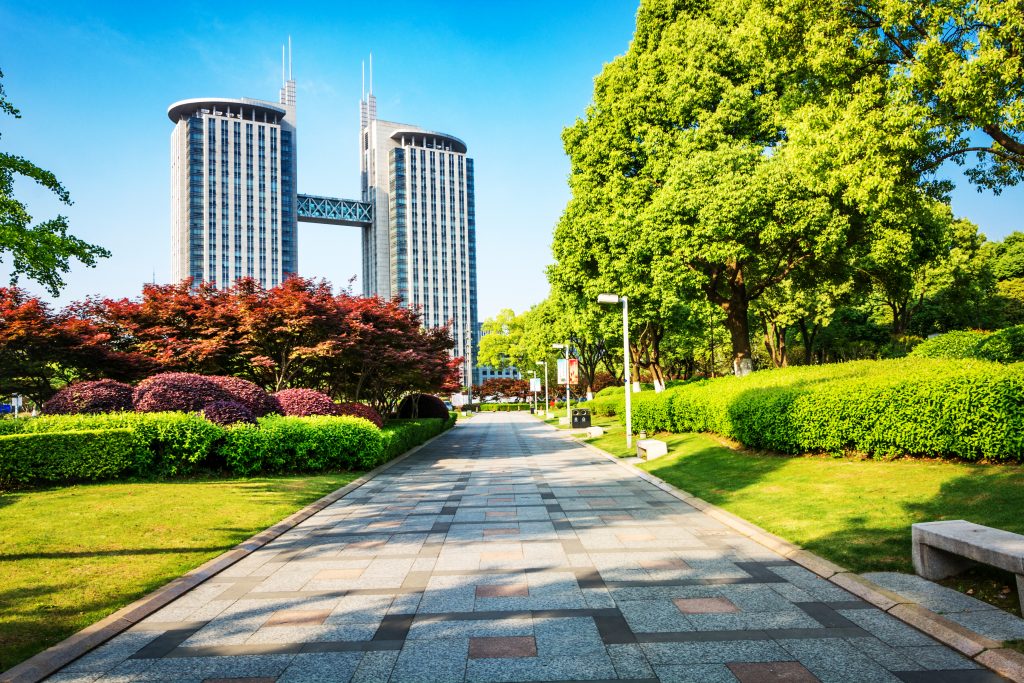
In the ever-evolving realm of construction and architecture, the significance of landscapes cannot be overstated. A well-designed landscape has the potential to elevate a construction site beyond mere functionality, transforming it into a harmonious fusion of human creativity and the natural environment. This article delves into the multifaceted ways in which landscapers enhance construction sites, harnessing the power of design, plants, water, and soil to create sustainable, visually appealing, and ecologically sound spaces.
Landscape architects play a pivotal role in enhancing construction sites. Their expertise lies in seamlessly weaving the built environment with the natural world, culminating in designs that transcend mere aesthetics. Landscape architects collaborate closely with construction architects to ensure that every outdoor space complements the architectural vision, fostering a cohesive and visually striking result.
The design process involves meticulous consideration of factors like topography, climate, and usage patterns. By strategically placing plants, trees, and water features, landscape architects can create functional outdoor spaces that harmonize with the building’s structure. They meticulously select plants that not only thrive in the local climate but also contribute to soil stability, erosion prevention, and even energy efficiency.
Construction sites are often characterized by disrupted soil and increased vulnerability to erosion. Landscapers implement ingenious solutions to combat soil erosion, preventing degradation and sedimentation of nearby water bodies. By introducing vegetation and ground cover, such as grass, shrubs, and native plants, they stabilize the soil, reducing surface water runoff that erodes the landscape.
Methods like phytoremediation, where specific plants are employed to absorb contaminants and enhance soil quality, are gaining traction. Additionally, innovative techniques like rain gardens and infiltration basins not only manage stormwater runoff but also allow it to replenish the groundwater table, effectively restoring the natural water cycle.
The integration of water features within a construction site’s landscape not only adds an aesthetic dimension but also serves practical purposes. Water features, ranging from ponds to fountains, enhance the overall ambiance and provide cooling effects, particularly in urban areas where concrete dominates.
Incorporating sustainable irrigation systems is another area where landscapers excel. Smart irrigation technology, such as soil moisture sensors and weather-based controllers, minimizes water wastage by delivering water precisely where and when it’s needed. This not only conserves a precious resource but also reduces water bills for property owners.
The expertise of landscapers goes beyond the construction phase; it extends to ongoing maintenance and care. A well-maintained landscape significantly enhances a property’s curb appeal, making it more attractive to potential buyers or tenants. Homes with thoughtfully designed outdoor spaces tend to command higher property values, underscoring the financial benefits of investing in professional landscaping services.
As climate change becomes an increasingly urgent global concern, landscapers are uniquely positioned to contribute to mitigation efforts. Strategic tree planting, for instance, not only provides shade and aesthetics but also sequesters carbon dioxide from the atmosphere. In urban areas, trees act as natural air purifiers, reducing pollution and improving air quality for residents.
The creation of green spaces within construction sites further counteracts the heat island effect prevalent in urban areas. Grass, vegetation, and trees mitigate temperature extremes, creating microclimates that alleviate the impacts of rising temperatures.
The collaboration between landscape architects, construction supervisors, civil engineers, and architects is essential for the successful integration of landscapes into construction sites. This multidisciplinary approach ensures that landscapes are not an afterthought but an integral part of the design process.
The future of landscape architecture within construction sites holds great promise. As sustainable design practices continue to gain traction, the demand for innovative landscape solutions will only increase. This bodes well for the environment, as landscapers continue to champion the restoration of natural resources, the reduction of soil erosion, and the promotion of water management techniques.
In conclusion, landscapers play a transformative role in enhancing construction sites. Their expertise in landscape design, erosion control, water management, and sustainable practices elevates these spaces beyond their utilitarian functions. Through the harmonious integration of architecture and nature, landscapers contribute to the creation of visually captivating, ecologically sensitive, and culturally significant spaces that stand as testaments to human ingenuity and environmental stewardship.
[geocentric_weather id=”45ff4ccd-3d3f-498e-b0b9-91aaaf766bc4″]
[geocentric_about id=”45ff4ccd-3d3f-498e-b0b9-91aaaf766bc4″]
[geocentric_neighborhoods id=”45ff4ccd-3d3f-498e-b0b9-91aaaf766bc4″]
[geocentric_thingstodo id=”45ff4ccd-3d3f-498e-b0b9-91aaaf766bc4″]
[geocentric_busstops id=”45ff4ccd-3d3f-498e-b0b9-91aaaf766bc4″]
[geocentric_mapembed id=”45ff4ccd-3d3f-498e-b0b9-91aaaf766bc4″]
[geocentric_drivingdirections id=”45ff4ccd-3d3f-498e-b0b9-91aaaf766bc4″]
[geocentric_reviews id=”45ff4ccd-3d3f-498e-b0b9-91aaaf766bc4″]